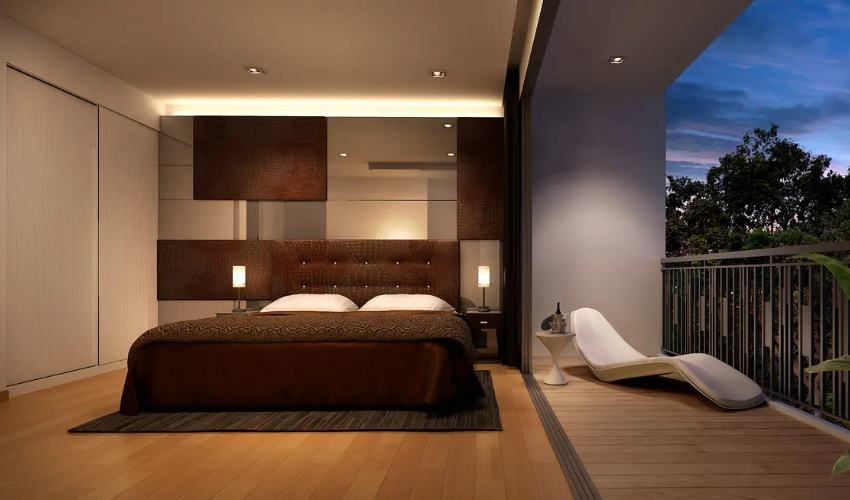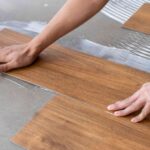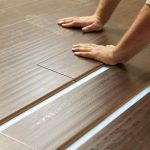The Psychology of Flooring
The psychology of flooring is a fascinating topic that explores the impact of floor types on our mood, behavior, and overall well-being. It's amazing how something as simple as the floor beneath our feet can influence our emotions and actions. As Dr. Sally Augustin, a renowned environmental psychologist, notes, "The floor is the first thing you see when you walk into a room, and it sets the tone for the entire space." But what exactly is it about flooring that has such a profound impact on our psychology?
The Impact of Color
When it comes to flooring, color is one of the most critical factors to consider. Different colors can evoke different emotions and moods, and this is especially true when it comes to flooring. For example, warm colors like hardwood or ceramic tile can stimulate creativity and energy, while cool colors like gray or blue can promote relaxation and calmness. As "color is a powerful tool that can be used to influence mood, behavior, and even physical well-being," says color psychologist, Dr. Karen Haller. But how exactly do different colors affect our mood and behavior? Let's take a closer look.
Warm colors, like those found in hardwood or ceramic tile, can create a sense of warmth and coziness in a room. This can be especially beneficial in spaces like living rooms or bedrooms, where we want to feel relaxed and comfortable. On the other hand, cool colors like gray or blue can create a sense of calmness and serenity, making them ideal for spaces like bathrooms or meditation rooms. But what about neutral colors like beige or white? These colors can create a sense of balance and stability, making them perfect for spaces like kitchens or home offices.

The Role of Texture
In addition to color, texture is another critical factor to consider when it comes to the psychology of flooring. Different textures can create different sensations and emotions, and this can be especially true when it comes to flooring. For example, smooth textures like hardwood or tile can create a sense of sleekness and sophistication, while rough textures like carpet or natural stone can create a sense of warmth and coziness. As "texture is a powerful trigger for our senses, and it can greatly impact our emotional and psychological state," notes Dr. Lisa Feldman Barrett, a neuroscientist and psychologist.
But how exactly do different textures affect our mood and behavior? Let's take a look at some examples. Smooth textures like hardwood or tile can create a sense of calmness and serenity, making them ideal for spaces like bedrooms or meditation rooms. On the other hand, rough textures like carpet or natural stone can create a sense of warmth and coziness, making them perfect for spaces like living rooms or family rooms. And what about mixed textures, like a combination of hardwood and area rugs? These can create a sense of visual interest and depth, making them ideal for spaces like home offices or studios.
The Connection to Nature
Another critical factor to consider when it comes to the psychology of flooring is the connection to nature. Flooring materials that mimic natural elements, like wood or stone, can create a sense of calmness and serenity, while also promoting a sense of well-being and connection to the outdoors. As "nature has a profound impact on our mental and physical health, and incorporating natural elements into our built environment can have a range of benefits," notes Dr. Richard Louv, a journalist and author. But how exactly do natural flooring materials affect our mood and behavior?
For example, hardwood flooring can create a sense of warmth and coziness, while also promoting a sense of connection to the natural world. This can be especially beneficial in spaces like living rooms or bedrooms, where we want to feel relaxed and comfortable. On the other hand, natural stone flooring can create a sense of calmness and serenity, while also promoting a sense of durability and timelessness. And what about flooring materials that incorporate natural elements, like bamboo or cork? These can create a sense of sustainability and eco-friendliness, while also promoting a sense of well-being and connection to the outdoors.
Choosing the Right Floor Type
So, how do we choose the right floor type for our space? Here are some factors to consider:
- What is the purpose of the room? Different rooms have different functions, and the floor type should reflect this.
- What is the style of the room? Different styles, like modern or traditional, require different types of flooring.
- What is the budget? Different flooring materials have different price points, and it's essential to consider this when making a decision.
- What are the maintenance requirements? Different flooring materials require different levels of maintenance, and it's crucial to consider this when making a decision. Some popular floor types to consider include:
- Hardwood flooring, which is durable and timeless
- Tile flooring, which is sleek and sophisticated
- Carpet flooring, which is warm and cozy
- Natural stone flooring, which is calm and serene
- Bamboo flooring, which is sustainable and eco-friendly As we consider these factors, it's essential to think about the psychology of flooring and how different floor types can influence our mood and behavior. By choosing the right floor type, we can create a space that promotes well-being, comfort, and happiness.
For instance, some benefits of hardwood flooring include its durability, timelessness, and ability to add warmth and character to a room. On the other hand, some drawbacks include its high cost, maintenance requirements, and potential for scratches and dents. Similarly, some benefits of tile flooring include its sleekness, sophistication, and ease of maintenance, while some drawbacks include its coldness, lack of warmth, and potential for cracking and breaking. By weighing these pros and cons, we can make an informed decision about the right floor type for our space.
Finding Inspiration in Unexpected Places
As we explore the psychology of flooring and its impact on our mood and behavior, it's interesting to consider how other industries approach the concept of atmosphere and ambiance. For instance, the world of entertainment often relies on clever design to create immersive experiences that draw us in and keep us engaged. When we think about it, the same principles that guide the creation of engaging flooring can also be applied to other areas, like the design of interactive games, where a single click can transport us to a new world, such as the one found at Ruff Heist slot online demo (Play’n GO), where the thrill of the unknown awaits. By examining these parallels, we can gain a deeper understanding of how different elements, including flooring, contribute to the overall atmosphere of a space, and how that atmosphere can influence our emotions and behaviors.
The Power of Flooring
In conclusion, the psychology of flooring is a complex and multifaceted topic that requires careful consideration. By understanding the impact of different floor types on our mood and behavior, we can create spaces that promote well-being, comfort, and happiness. As Dr. Augustin notes, "the floor is a critical component of the built environment, and it has a profound impact on our mental and physical health." So, next time you're choosing a floor type, remember the psychology of flooring and the powerful impact it can have on our lives.
But what does the future hold for the psychology of flooring? As our understanding of the topic continues to evolve, we can expect to see new and innovative flooring materials that prioritize well-being and sustainability. For example, some companies are now developing flooring materials made from recycled plastic or sustainable wood sources. These materials not only reduce waste and promote eco-friendliness but also provide a unique and stylish aesthetic. As we move forward, it's essential to consider the psychology of flooring and how it can be used to create spaces that promote happiness, comfort, and well-being.
In the meantime, here are some popular floor types to consider, along with their benefits and drawbacks:
- Hardwood flooring is durable and timeless, but can be expensive and require high maintenance
- Tile flooring is sleek and sophisticated, but can be cold and lack warmth
- Carpet flooring is warm and cozy, but can be prone to stains and require frequent cleaning
- Natural stone flooring is calm and serene, but can be expensive and require high maintenance
- Bamboo flooring is sustainable and eco-friendly, but can be prone to scratches and dents As we weigh these pros and cons, it's essential to think about the psychology of flooring and how different floor types can influence our mood and behavior. By choosing the right floor type, we can create a space that promotes well-being, comfort, and happiness.
For example, if you're looking to create a cozy and inviting living room, you may want to consider hardwood or carpet flooring. These materials can add warmth and character to the space, while also promoting a sense of relaxation and calmness. On the other hand, if you're looking to create a sleek and sophisticated kitchen, you may want to consider tile or natural stone flooring. These materials can add a touch of elegance and sophistication to the space, while also promoting a sense of cleanliness and hygiene. By considering the psychology of flooring, we can make informed decisions about the right floor type for our space and create a home that promotes well-being, comfort, and happiness.










